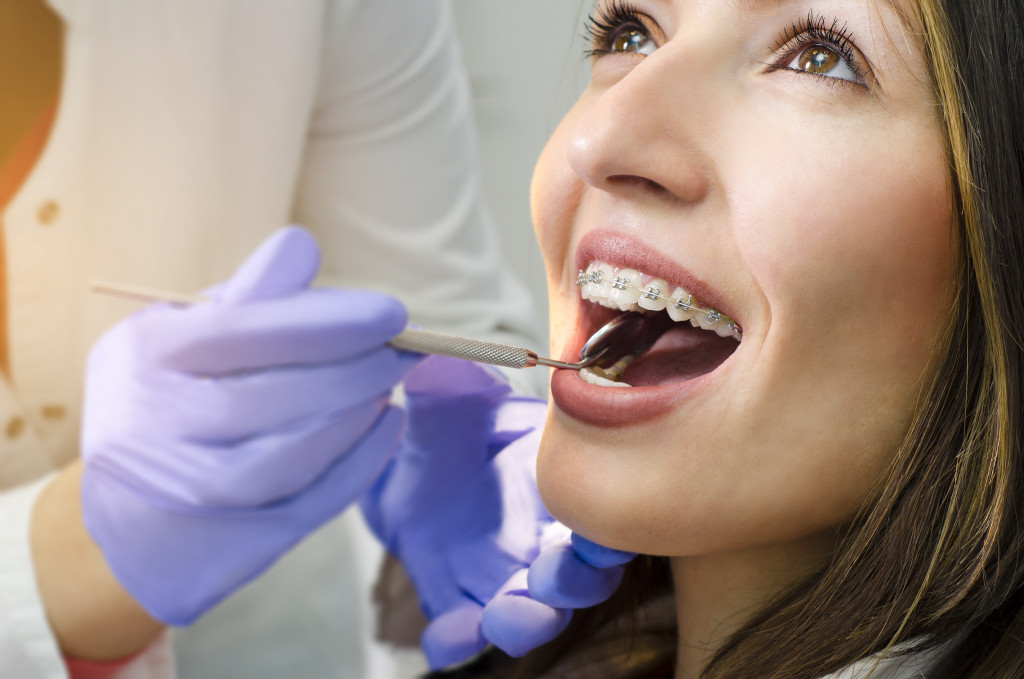Do you often find yourself covering your mouth to hide your radiant smile behind a mask of hands? Is it because you’re too embarrassed to reveal your crooked teeth to the judging eyes of the world? Well, you shouldn’t be. Misaligned teeth are nothing to be ashamed of. In fact, they are quite common.
However, if the way your teeth look isn’t a problem for you but the way they make you feel is, then it might be a bad sign. Misalignment of teeth may also cause difficulty in speaking or chewing and even cause other oral health issues. If that happens to be the case with you, you should immediately get yourself some expert help.
If you identify as a person with crooked teeth who hates them, I’m assuming you ask yourself the same question repeatedly, “why me”? Learn the reasons behind your teeth’ misalignment and find possible solutions to get rid of it.
What Causes Misalignment of the Teeth?
The medical term used for crooked teeth is malocclusion. The main reason why your teeth may be misaligned is the probable lack of available gum space in your mouth.
Myofunctional Habits
A baby’s teeth, when growing, can be exposed to certain risk factors, such as sucking on the thumb or on a pacifier for longer than three years. This can cause the jawbones to misalign, resulting in slanted teeth procuring out from the jaw.
Heredity
If your baby’s teeth are crooked, do not worry. Chances are its permanent teeth would grow out to be just fine. However, there is a significantly lesser chance of that. Oftentimes, when the baby teeth are crowded, permanent teeth grow out to be crooked as well. One contributing factor to this effect can be your heredity. Genes play a significant role in deciding how your teeth will align themselves. So, if you have a parent or two whose teeth are as misaligned as yours, you know who to blame.
Other factors that account for malocclusion are:
Shrunken Jaw
Jaw size matters a lot when it comes to growing teeth. A shorter, smaller jaw would have lesser space to accommodate all 32 teeth in the mouth. As a result, the teeth become overcrowded, fighting for freedom. Doctors believe that the reason behind a smaller jaw is eating softer foods, which does not help at all in expanding the jaw size, hence the overcrowding.
Underbite and Overbite
The perfect teeth alignment is when your upper jaw’s molars sit smoothly over your lower molars, without any difficulty. That is only the case when your upper front teeth touch the grooves of your lower teeth.
If your upper jaw protrudes farther than the lower set of your teeth, malocclusion occurs, and thus, you have yourself an overbite. An underbite, however, is the opposite. The lower front teeth sit above the upper molars in this condition. An overbite is usually more common than an underbite, and hence, less disturbing.
Poor Dental Care
If you do not get your child checked with a dentist at least twice every year, chances are he is growing a cavity in his teeth. Cavity and gum diseases can result in the child’s teeth falling out before time. This may further result in the permanent teeth growing slanted. In fact, poor oral health can also lead to your permanent teeth going crooked over time or may even give birth to health problems and mouth diseases.
What are my Teeth-Straightening Options?

When it comes to aligning your teeth into a perfect symmetry again, braces are your go-to solution. Whether it is an underbite, an overbite, or overcrowding of your teeth, braces will serve as an antidote to your aching nerve! However, do keep in mind that this process is relatively slower and will take two to three years, depending on the severity of your malocclusion, before you get your desired result.
And even after your braces have come off, you will have to wear retainers to hold your teeth in place. We recommend getting permanent, gold wire retainers instead of plastic ones for your teeth as they’re easier to manage, aren’t visible, are extremely durable, and last an eternity!
Types of Braces
There are numerous braces options available out there for you to choose from. These include:
- Metal Braces
- Ceramic Braces
- Invisible Braces, and
- Lingual Braces
If you’re particularly conscious about your appearance, you should get your teeth fitted with invisible braces, also called Invisalign. They are clear coatings that are fitted over each tooth and changed every two months.
Although, you might want to know that these invisible braces are more expensive and generally take longer to fix your teeth as compared to traditional braces. Hence, if you want to cut back expenses, you might want to consider sacrificing your looks to save money by going for the traditional metal or ceramic braces instead.
Misalignment of teeth is not something to be worried about, except if it is severe and causes you some kind of difficulty or physical pain. To state the obvious, every person appreciates a healthy set of bright enamel. However, crooked teeth have got quite a unique charm to them. Even if crooked, your teeth add uniqueness to your smile, making it all the more charming.
Nonetheless, if you’re obsessed with having perfectly aligned pearly whites, then we do suggest that you opt for dental treatment. Depending on the severity of your malocclusion, your orthodontist may suggest braces or, alternatively, teeth-straightening surgery.






